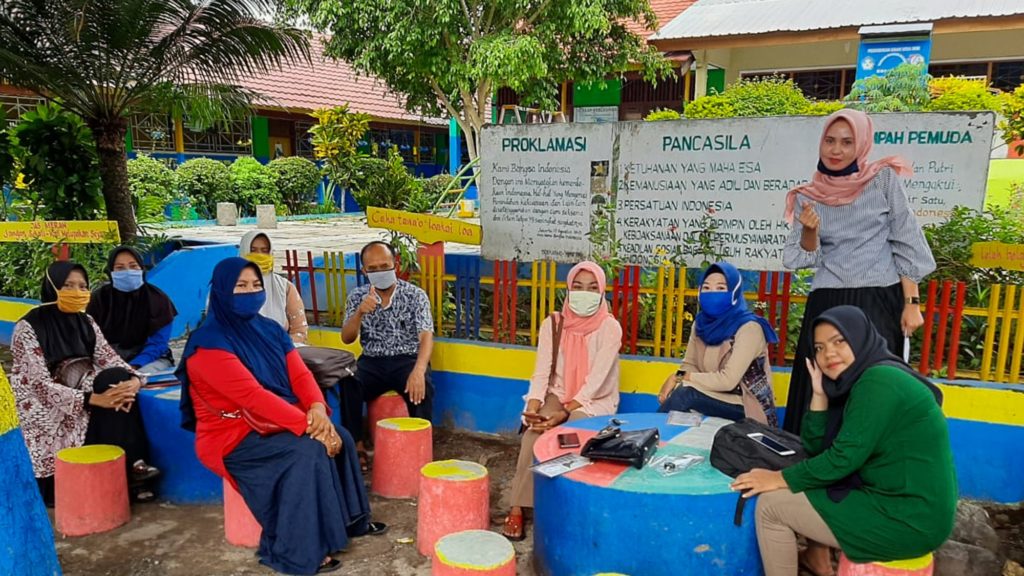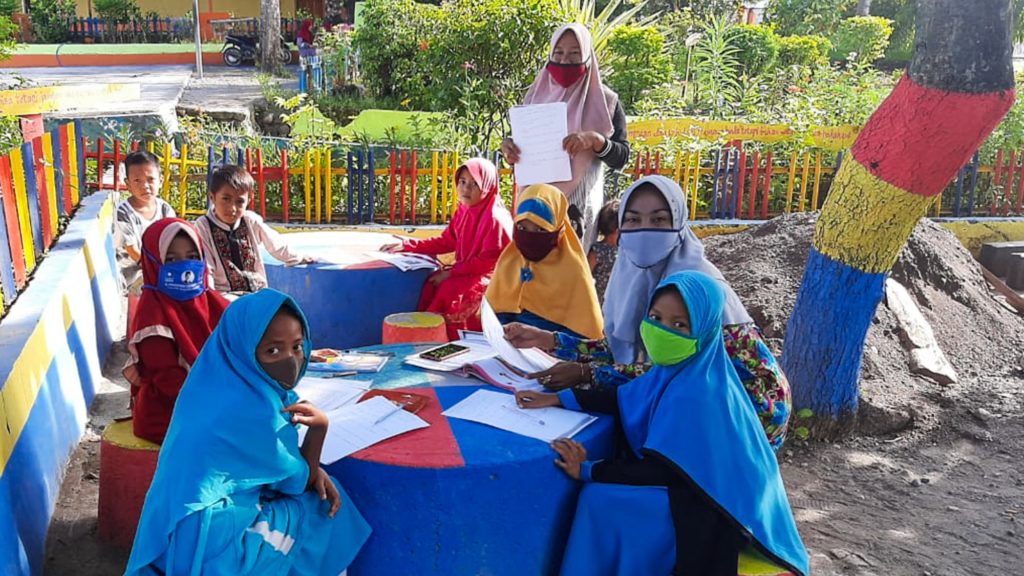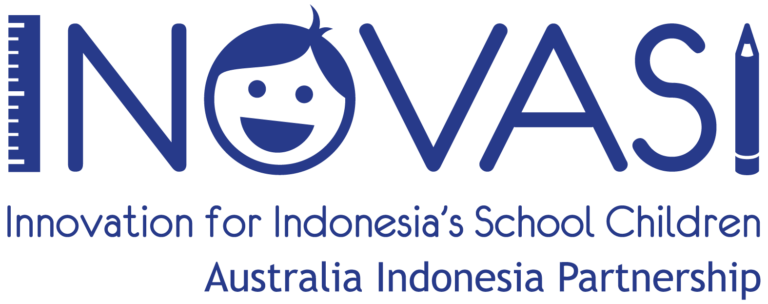
When learning activities could not run as usual, the principal and teachers tried their hardest to find ways for their students to be able to continue to learn. This is what happened to Haryono, S.Pd., Principal of SDN 29 Woja state elementary school in Dompu regency, West Nusa Tenggara (NTB). A week after the instruction to study from home was passed down from the central government, he immediately prepared a special learning model.
“At that time, the circular and instructions from the Education Office were not yet issued. However, we at school have already taken the initiative to start trying several ways to adapt to our students’ condition. We feel sorry for our students because they will get bored if they were constantly at home without doing any activities,” said Haryono.
At first, Haryono tried the online learning model. This method turned out to be ineffective because most of the students did not have access to cellphones that would help them learn online. Even if they had the facilities, many did not understand how to use it. Based on that, Haryono concluded that the online learning method was not feasible.
They also tried doing home visits to the students’ houses. However, this model was also deemed inefficient for implementation. According to Haryono, much time is wasted on the journey to the student’s house. This, in turn, reduces the visiting time. This model also turned out to be tiring for teachers because they had to move from one house to another. Additionally, there was a risk factor because teachers had to meet people in different places.

Haryono then made the choice that he calls the ‘Outside Learning’. In this model, students come to school but not simultaneously. Each class comes to school by taking turns. During each day, only one class can attend.
A space in the school yard is arranged in such a way that children and teachers can be at a safe distance from one another. They go to school to receive learning materials and assignments that they will work on at home for the next week. This entire process was carried out by observing the established health procedure.
“All this process takes place outside of the classroom and the time is very limited, a maximum of one hour for one meeting. There, the students got some instruction on the subject material and they would go home with assignments, which will be checked in the following week. While at school, everyone wears masks and we provide a place for washing hands,” told Haryono.
Teachers only come to school if it is their class’ turn. Haryono himself, as the school principal, comes every day to ensure that the outside learning process is going according to the procedures he has set up.
For Haryono, the current goal is ensuring that their students are still in a state of learning. It is, of course, no longer possible to pursue the targets within the curriculum. In order to not fall far behind the curriculum, Haryono has directed the teachers in his school to make worksheets and assignments contain learning material that has not yet been studied.
In the future, if the condition of this pandemic does not change, Haryono will continue the learning model that they have been using during the pandemic. According to him, this model has even been replicated in other schools in Woja district.
“Some time ago, I communicated about what we have been doing at SDN 29 Woja to the Regional Technical Implementation Unit (Unit Pelaksana Teknis Daerah, or UPTD) of the Education, Youth and Sports Office in our area. I shared our experience, and we inspire one another among the school principals. I also saw as to whether what we have been doing has already been done in other schools,” said Haryono, who is also the INOVASI Regional Facilitator (Fasilitator Daerah, or Fasda) in Dompu regency.






